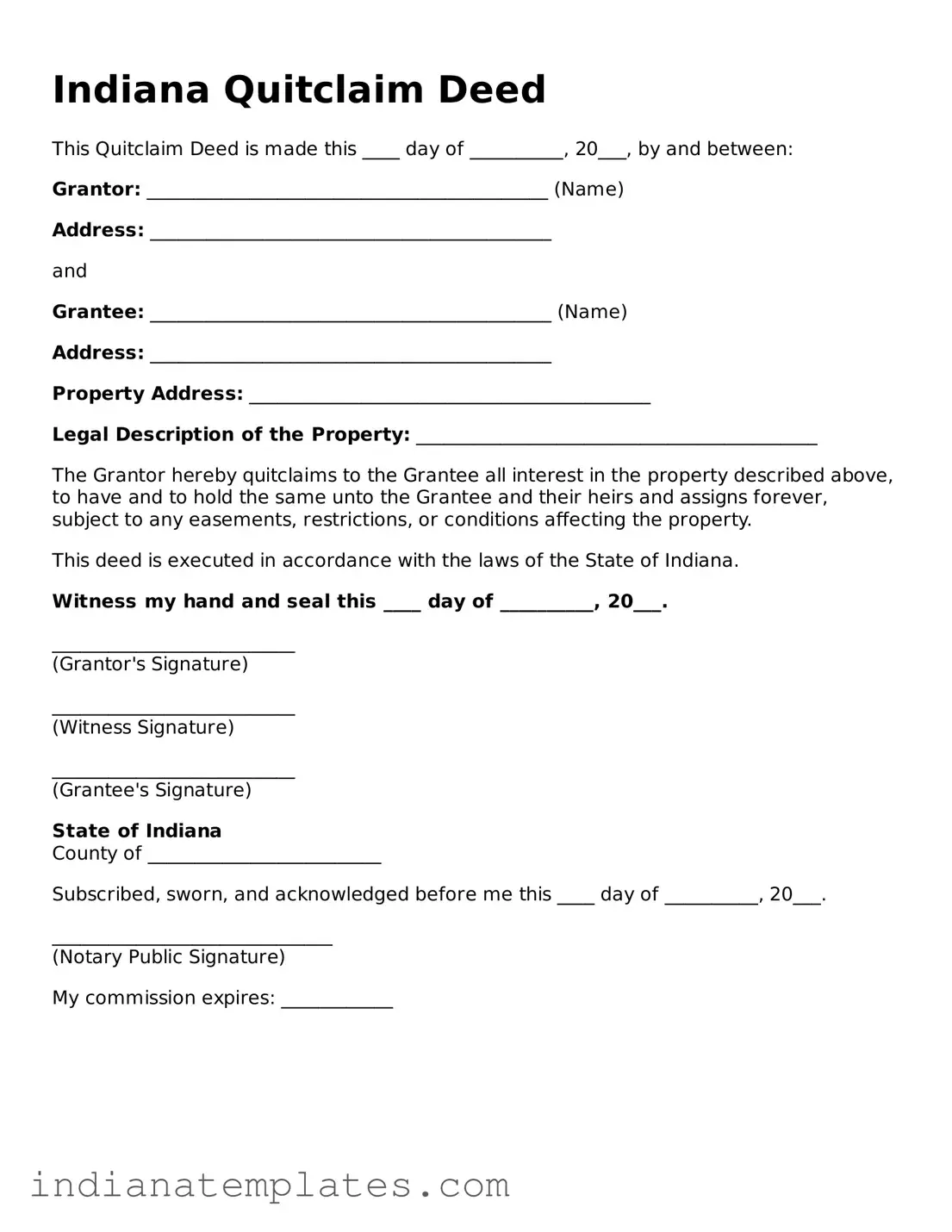Indiana Quitclaim Deed
This Quitclaim Deed is made this ____ day of __________, 20___, by and between:
Grantor: ___________________________________________ (Name)
Address: ___________________________________________
and
Grantee: ___________________________________________ (Name)
Address: ___________________________________________
Property Address: ___________________________________________
Legal Description of the Property: ___________________________________________
The Grantor hereby quitclaims to the Grantee all interest in the property described above, to have and to hold the same unto the Grantee and their heirs and assigns forever, subject to any easements, restrictions, or conditions affecting the property.
This deed is executed in accordance with the laws of the State of Indiana.
Witness my hand and seal this ____ day of __________, 20___.
__________________________
(Grantor's Signature)
__________________________
(Witness Signature)
__________________________
(Grantee's Signature)
State of Indiana
County of _________________________
Subscribed, sworn, and acknowledged before me this ____ day of __________, 20___.
______________________________
(Notary Public Signature)
My commission expires: ____________
